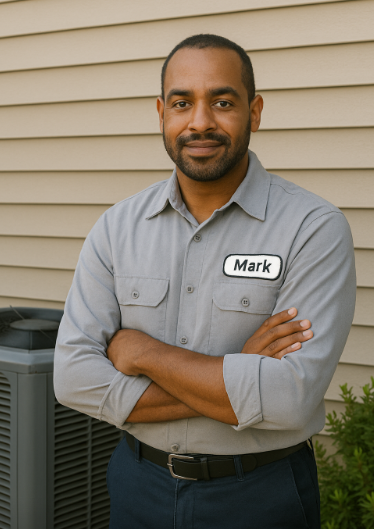When it comes to creating a comfortable living environment, understanding your options for indoor heating units and home cooling systems is essential. Whether you're building a new home, renovating an existing space, or simply looking to upgrade your current system, making informed decisions can lead to improved comfort and energy efficiency.
Understanding Indoor Heating Units
Indoor heating units are integral to maintaining a warm and cozy atmosphere during colder months. There are various types of heating systems available, each with its unique benefits and considerations.
1. Forced Air Systems
Forced air systems are among the most common heating methods in residential homes. These systems use a furnace to heat air, which is then distributed throughout the home via ducts and vents. They are compatible with various fuel sources, including natural gas, electricity, and oil.
Pros:
-
Quick heating response
-
Can be combined with air conditioning systems
-
Allows for air filtration and humidity control
Cons:
-
Potential for uneven heating
-
Ductwork can accumulate dust and allergens
-
Requires regular maintenance
2. Radiant Heating
Radiant heating systems warm a room by radiating heat from a hot surface directly to the occupants and objects in the room. This can be achieved through floor heating, wall panels, or baseboard heaters.
Pros:
-
Provides consistent and comfortable heat
-
Eliminates drafts and noise associated with forced air systems
-
Ideal for allergy sufferers due to lack of air movement
Cons:
-
Slower response time
-
Higher installation costs
-
Difficult to retrofit in existing homes
3. Heat Pumps
Heat pumps are versatile systems that can provide both heating and cooling. They work by transferring heat from one place to another using refrigerant. In heating mode, they extract heat from the outside air and bring it indoors; in cooling mode, they reverse the process.
Pros:
-
Energy-efficient operation
-
Dual functionality (heating and cooling)
-
Suitable for moderate climates
Cons:
-
Performance can decrease in extremely cold temperatures
-
Higher initial installation costs
-
Requires regular maintenance
For more information on heat pump systems, you can refer to the U.S. Department of Energy's guide on home heating systems.
Exploring Home Cooling Systems
Just as important as heating, cooling systems help maintain a comfortable indoor environment during warmer months. There are several options to consider, depending on your home's layout and your specific needs.
1. Central Air Conditioning
Central air conditioning systems use a network of ducts to distribute cooled air throughout the home. They are typically paired with a furnace in a split system.
Pros:
-
Even cooling throughout the home
-
Can be combined with heating systems
-
Suitable for homes with existing ductwork
Cons:
-
Higher installation costs
-
Ductwork can lead to energy losses
-
Requires regular maintenance
2. Ductless Mini-Split Systems
Ductless mini-split systems consist of an outdoor compressor unit and one or more indoor air-handling units. They are ideal for homes without existing ductwork or for room additions.
Pros:
-
Flexible zoning capabilities
-
Energy-efficient operation
-
Quiet operation
Cons:
-
Higher upfront costs
-
Requires professional installation
-
Aesthetic considerations for indoor units
3. Evaporative Coolers
Evaporative coolers, also known as swamp coolers, use the natural process of water evaporation to cool the air. They are most effective in dry climates.
Pros:
-
Energy-efficient operation
-
Adds moisture to dry indoor air
-
Lower installation and operating costs
Cons:
-
Less effective in humid climates
-
Requires regular maintenance
-
Limited cooling capacity
For a deeper dive into home cooling systems, the U.S. Department of Energy provides a comprehensive overview on home cooling systems.
Integrating Heating and Cooling Options
Many modern systems offer both heating and cooling capabilities, providing year-round comfort with a single unit.
1. Heat Pump Systems
As previously mentioned, heat pumps can both heat and cool your home. They are an energy-efficient option, especially in moderate climates.
2. Hybrid Systems
Hybrid systems combine a heat pump with a traditional furnace. The heat pump handles heating and cooling during milder temperatures, while the furnace kicks in during extreme cold.
Pros:
-
Optimizes energy use
-
Provides consistent comfort
-
Suitable for varying climate conditions
Cons:
-
Higher installation costs
-
Requires regular maintenance
-
Space considerations for dual units
3. Zoned Systems
Zoned systems use multiple thermostats and dampers within the ductwork to control the temperature in different areas or zones of the home. This allows for customized comfort and energy savings.
Pros:
-
Tailored comfort for different areas
-
Energy savings by heating or cooling only occupied zones
-
Increased system efficiency
Cons:
-
Complex installation
-
Higher upfront costs
-
Requires professional maintenance
Choosing the Right System for Your Home
Selecting the appropriate heating and cooling system depends on various factors, including your home's size, climate, existing infrastructure, and budget.
Considerations:
-
Climate: Your local climate plays a significant role in determining the most efficient system. For instance, heat pumps are effective in moderate climates but may struggle in extreme cold.
-
Home Size and Layout: Larger homes or those with multiple levels may benefit from zoned systems or ductless mini-splits.
-
Existing Infrastructure: If your home already has ductwork, a central air system might be the most straightforward option.
-
Budget: Consider both the initial installation costs and long-term operating expenses.
For personalized advice, it's beneficial to consult with a licensed HVAC professional who can assess your home's specific needs.
Conclusion
Understanding your options for indoor heating units and home cooling systems is crucial in creating a comfortable and energy-efficient living environment. By considering factors such as climate, home size, and budget, you can make informed decisions that meet your specific needs.
Remember, investing in a quality system not only enhances comfort but can also lead to long-term savings through improved energy efficiency. Systems such as in the Goodman 3-Ton 14.5 SEER2 R32 Bundle ensure consistent, comfortable cooling throughout the year. Whether you're interested in traditional systems or modern heat pump technologies, there's a solution tailored for every home.







